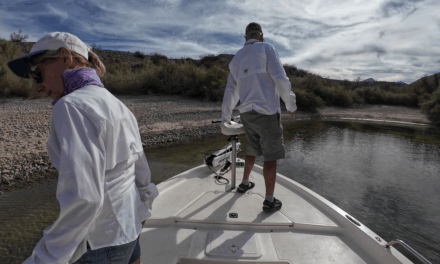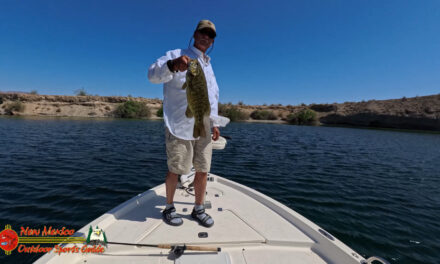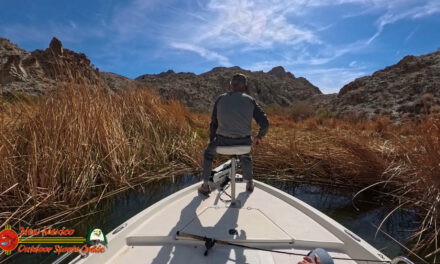Michael Eugene Smith was an adult who felt it unnecessary to wear his life jacket on that final day on Lake Conroe. After all, the boat was only moving at seven to eight MPH and he and his friends were only about 100 yards from shore in their 12’ johnboat.
But Michael Smith was an epileptic. He had a violent epileptic seizure and fell overboard. Despite valiant efforts of the Montgomery County Sheriff’s Department, the U.S. Forest Service, a game warden, Sergeant Leldon Hamilton, and two members of the U.S. Coast Guard Auxiliary, Bing Hastings and Diane Wharton, his body floated to the surface 46 hours later.
Smith was the needless victim of a drowning that could have been prevented through common sense. Personal Flotation Devices, or life preservers should be worn by all persons in a boat, whether it is moving or not. As a matter of fact, it is a good idea to wear one when you’re anywhere near the water. This goes for children, adults, experienced swimmers, and ESPECIALLY ANYONE PRONE TO SEIZURES, BLACKOUTS, DISORIENTATION, ETC.
The Texas Water Safety Act is written by the Texas Parks & Wildlife Department and applies to all persons in Texas waters. It states: “The operator of every Class A and Class 1 motorboat while underway shall require every passenger under thirteen (13) years of age to wear a Personal Flotation Device of the sort prescribed by the regulations of the Commandant of the Coast Guard. A life belt or ring buoy does not satisfy this requirement.”
In regards to personal watercraft, such as jet skis and water bikes, “Coast Guard approved Type I, II, III, or V must be worn by each person on or being towed by personal watercraft.” The different types of PFDs pertain to the weight of the person wearing it.
Greg Gibson, a Precinct 1 Deputy Constable assigned to Lake Conroe, says that children under the age of 13 also need the correct child-sized PFDs. A life preserver must also be available for all adults on board. They should be adult-sized and adults should have easy access to them. In other words, they cannot be under heavy equipment or stored in a lower cabinet.
Gibson adds that jet skiers, of any age, are required to wear PFDs at all times.
Gibson is a stickler on children wearing life jackets. He also believes all persons with mental or physical handicaps should wear them.
Deputy Sheriff Jim Ford was principally involved in the futile rescue efforts of Mr. Smith. He says, “anyone with common sense, especially if they have a physical handicap, would be wearing a PFD anytime they’re around the water.”
The subject of PFDs is a sore spot with Ford. He says he gets violations all the time with kids not wearing the required life saving equipment. “It’s the infrequent recreational boaters that cause most of the problems,” he says, “as far as PFDs or equipment violations.”
Robert Schuster is Dive Master of the Montgomery County Dive Team. These are the guys that retrieve the bodies of drowning victims in Lake Conroe and other area lakes. Schuster says he has pulled numerous children out of the water after playing on piers or near bulkheads, and GUESS WHAT? They weren’t wearing life preservers! Not one! When the Dive Team is called, it is after the child has been in the water too long for a safe recovery, in most cases.
Schuster says he has not had to go after one drowning victim in his ten year career with Montgomery County that was wearing a PFD, with one exception. The exception was a heart attack victim that the coroner says was dead before he hit the water.
The Boating Trades Association of Texas is self-governing organization of more than 650 boat dealers, manufacturers, distributors and marina operators. It is dedicated to the interests of the boating industry and public of Texas.
The BTAT mails a pamphlet titled the Commandments of Boating to every Texan that registers their boat with the Texas Parks & Wildlife Department, according to Lee Couch of the BTAT. It is required that every boat in excess of 14 feet in length be titled with the Texas Parks & Wildlife Department. Over 600,000 pamphlets have been mailed to Texas boatowners by the BTAT to date.
The first commandment listed to ensure boating fun and safety says, “Be sure to wear a life jacket (Personal Flotation Device). Even an expert swimmer is not safe without one.”
Recently, Darryl Hurst, President of the BTAT said, “we strongly support all efforts to increase enforcement…of…the entire Water Safety Code. While we were able to reduce our accident rate last year, there continues to beincidents of irresponsible boating. We have no tolerance for illegal or inappropriate behavior on the water and we will continue to work for a more educated and informed boating public.”
The BTAT is a member of the Boater Education Advisory Group. This group is comprised of representatives from the Texas Parks & Wildlife Department, the Marina Association of Texas, the U.S. Coast Guard Auxiliary, the American Red Cross, the U.S. Power Squadrons, the Lower Colorado River Authority, the National Park Service and other organizations interested in promoting safe recreational boating.
The Texas Parks & Wildlife Department offers a course free of charge called “Texas Boating Basics” to boaters of all ages and experience.
At this time, it is not a part of the Texas Water Safety Act that all persons prone to seizures or otherwise impaired are required to wear PFDs, unless they are under the age of 13 and aboard a moving water vessel. Deputy Sheriff Ford says it’s “common sense” that should make someone with a mental or physical impairment wear a life jacket. Will it take an Act of Congress to enforce common sense?
– Lake Mohave
– Lake Mohave






